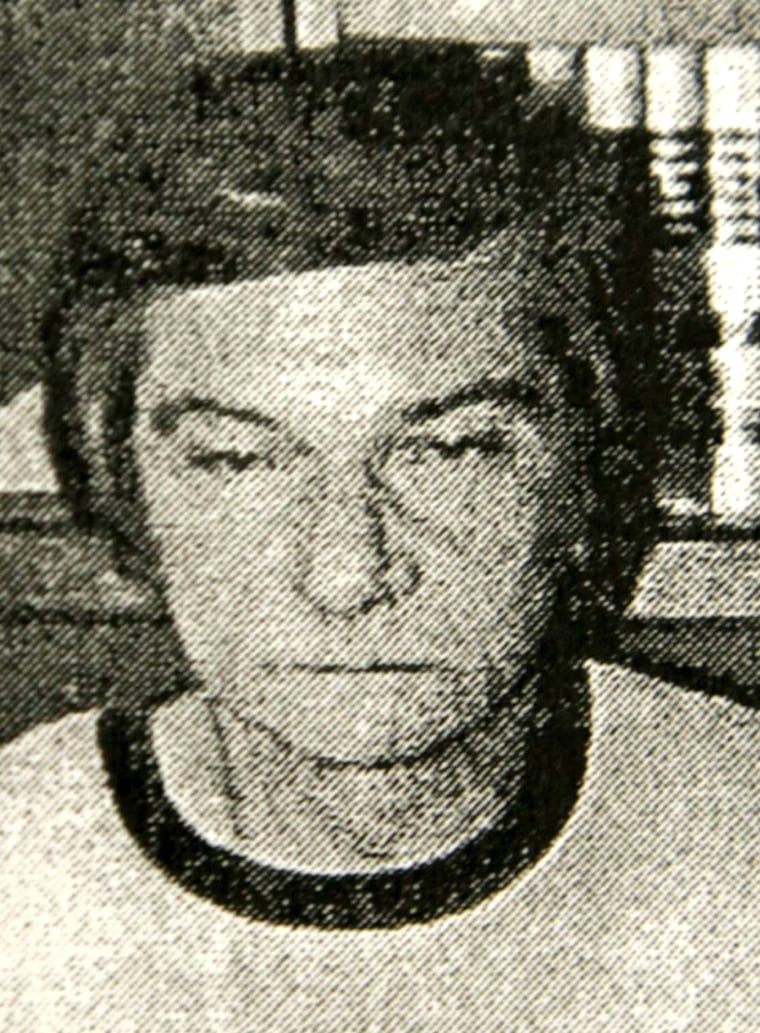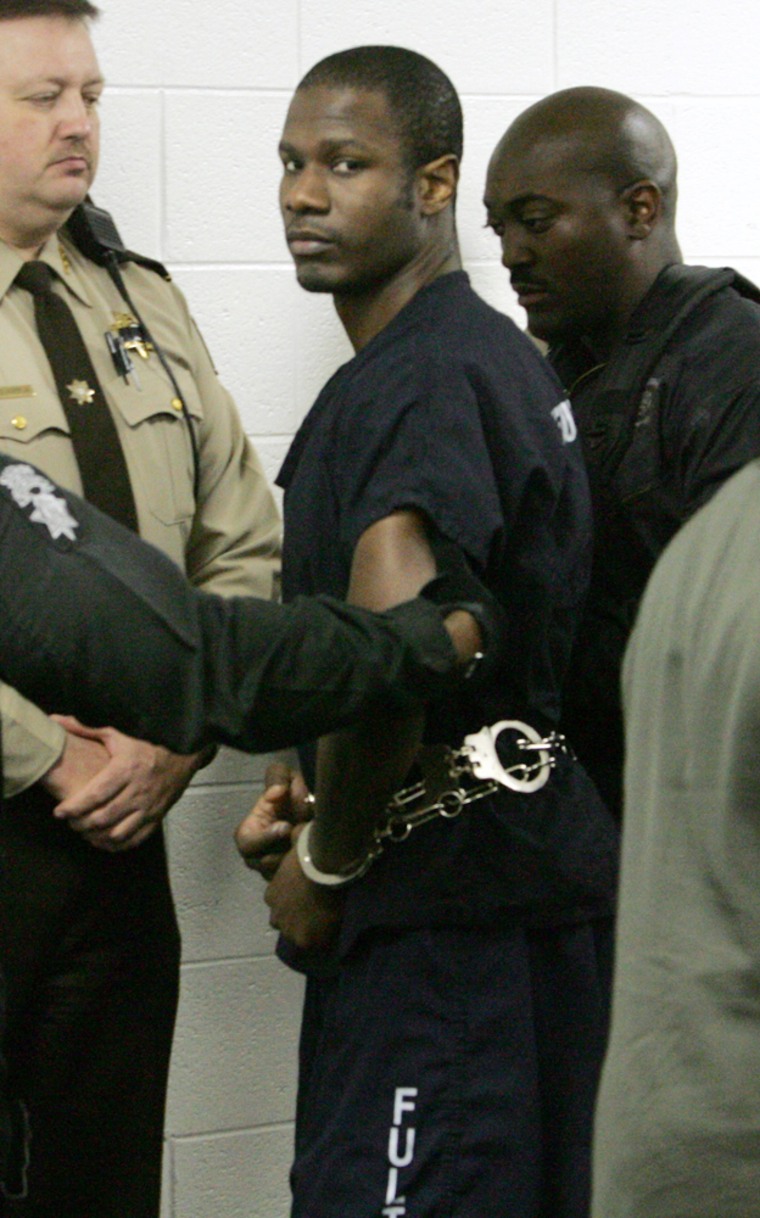The month of March is better-known for the beginning of spring, the celebrations of Easter and St. Patrick's Day— and even the flurry of activity surrounding the battle between college basketball's best teams. But this March 2005 was especially eventful in the world of law and order.
Let's revisit last month's "A Profiler's Perspective" for an update on the cases studied, and for additional lessons learned.
BTK serial killer captured
Confessed BTK killer (his own code name for "Bind them, Torture them, Kill them”) 60-year-old Dennis Rader received the Good Conduct Medal when he was in the U.S. Air Force from 1966 to 1972. Rader is now believed to have murdered 10 people in the Wichita, Kansas area between 1974 and 1991, but there are at least 25 unsolved murders in that area during this time frame that need be compared to BTK's m.o. and DNA. Rader may be guilty of other unsolved, unlinked, and unmentionable homicides.

What made Rader somewhat unique in the ranks of serial killers was his ability to hide in plain sight. [Note that “experts” estimate that there are “as few” as 16 (according to the FBI) and as many as 300 (according to a true crime author) serial killers operating in the United States at any one time.
Some now suggest that they saw the negative aspects of Rader's personality— what profilers call “leakage”— but he just never appeared as a strong blip on law enforcement's sonar until he resurfaced in March 2004 with his “catch me if you can” letter writing campaign. It's not that law enforcement didn't try to find him; they just missed him, even though they went so far as to even seek out secret government satellite overfly photos of the local area in an attempt to “spot” or otherwise identify the BTK killer after a 1977 murder.
As a former FBI profiler, I don't think that Rader, a local code enforcement official who had once applied to be a police officer, necessarily wanted to be caught. I think that he believed that he had eluded identification and apprehension for so long that he felt he couldn't be caught. Had it not been for his own activities this past year, he might never have been caught.
Rader likely craved the attention that BTK received during his known murderous activities over those three decades, perhaps to substitute for the feelings of power and control that he had when he was committing his suspected murders. A sure way to regain this level of attention was to re-engage media and the police, and by reawakening the icy cold feeling of threat and vulnerability that his community first experienced some 31-years ago.
We're now told that Rader might plead guilty to many of these murders, thereby avoiding a trial, one that would expose his wife and grown children to even more humiliation and shame. But will he give up the chance for yet more attention and will yet more murders be linked to him? The investigation continues.
The Lefkow murder case
We now know the killer of Chicago Federal Judge Joan Lefkow's husband and mother was not the neo-Nazi “head case” that originally plotted to kill Judge Lefkow, but a physically disfigured, mentally challenged 57-year unemployed refugee who had allegedly fled Poland in the early 80s because of his refusal to join the Communist Party. Upon entering the United States, the then-immigrant changed his name to Bart Ross.

Ross shot himself to death 10 days after the Lefkow murders. He left a suicide note calling all judges terrorists and medical doctors "Nazis." He had also written out a list of those he wanted to kill, a hit list of sorts, that contained the names of ten lawyers, five doctors, and a total of 11 state and federal judges. I think about the other people on Ross' hit list that might also have fallen victim to Ross had that local police officer not gone the extra mile and made a routine traffic stop of Ross' van displaying out of state tags.
The .22 caliber weapon that Ross used to kill Michael Lefkow and Donna Humphrey has not been found (he used yet another firearm to kill himself). As no relative from Poland has claimed his body, and he only had 10 cents on him at the time of his death, he will probably be buried in the equivalent of a pauper's grave.
Judge Lefkow courageously continues her duties on the bench and her responsibilities as a mother, but her morning cup of coffee with her husband Michael, and the opportunity for her mother Donna to witness her grandchildren grow to adulthood has been taken away forever. Why? Because Judge Lefkow had done her duty and decided against Ross in his rambling and misguided civil suit against a local hospital.
Last week in Kansas City, another defendant appeared before another judge for sending a letter stating that “He hated the government and all who worked for it,” threatening to kill all such employees “execution-style.” In most cases heard by a judge, at least 50 percent of the people appearing before her (or him) go away unhappy. Fortunately, only a small percentage of them pick up a gun to even the score.
Some good comes from tragedy: The Atlanta murders
Ashley Smith, the 26-year old single mother who negotiated and prayed with accused Atlanta courthouse killer Brian Nichols, was presented with over $70,000 in reward money for her role in the capture of the accused rapist, kidnapper, and now quadruple murderer. “My life is a testimony that God can use us even in the midst of tragedy and miracles do happen,” she said when presented with the reward money from seven different local, state and federal agencies.
From the investigative side of the house, we now know that multiple human errors, missed opportunities, poor security procedures, and maybe just “bad luck” contributed to the environment that allowed Nichols to beat one female deputy and seize her pistol— and then to traverse the courthouse and enter the courtroom where he was to appear that fateful day. Nichols then shot and killed the presiding judge and the court reporter. He fled the courthouse where he next shot and killed a deputy sheriff, and eventually murdered an off-duty federal agent a few hours later.
Earlier that month Nichols' mother had sent an e-mail to sheriff's officials warning them that if the verdict in Nichols' rape trial didn't go his way, she feared that he would try to act out in court and take someone's weapon. It was mother's intuition that was unfortunately right in every respect. The day before Nichols' murderous activities, deputies found two homemade knives hidden in Nichols' shoes. Had his cell been subsequently searched— which it wasn't— deputies would have found other contraband relating to what is now believed to have been his escape plan.
Bad "luck"? No, you make your own "luck" through developing and following good policies and procedures. The extra deputy that was to be in the court room on the morning of the shooting was excused from work that day, and two of the three deputies that should have been monitoring the security cameras that caught Nichols as he beat deputies and murdered the judge and court reporter were on other assignments. The assaults that were recorded on video in real time went unseen by human eyes. The clues and warnings that could have prevented these deaths were simply missed or just ignored.

Brian Nichols was a big, smart psychopath who took advantage of every kink in the courthouse armor that day, and there were many. We can only thank God for the common sense and uncommon courage of Ashley Smith. She is someone with the heart of a lion, who without formal hostage negotiations training talked a sociopathic killer into ending his murderous spree.
Let's hope the horrific lessons of that day are not lost on the men and women charged with the safety and security of the court houses of this nation, and that we can each borrow a little bit of Ashley Smith's hope, heart and courage.
The pirates are winning but the hostages are safe— for now
The “Jolly Roger” first appeared around 1700 when French pirate Emanuel Wynne hoisted his fearful ensign in the Caribbean. Three hundred and five years later, the pirate spirit still flies on unidentified ships and boats in the dangerous waters off the coast of Indonesia and other Asian and Caribbean countries. The captain and two crew members from a Japanese tugboat that were kidnapped three weeks ago by pirates in the Strait of Malacca have been found alive. The three mariners had been moved between seven different pirate boats and forced to trek across a jungle before being set adrift in a small boat for two days. This was after an assumed ransom had been paid by their employer to obtain their release.
When the FBI, the CIA, and Homeland Security consider international terrorism, one doomsday scenario involves terrorists seizing a ship filled with flammable liquid or deadly chemicals and blowing it in a busy port or harbor. This potential arose last month when 35 heavily armed pirates boarded the Tri Samudra, an Indonesian chemical tanker carrying a highly flammable liquid. The pirates briefly took control of the ship before kidnapping the ship's captain and chief engineer. The two hostages were released days later after their kidnappers demanded (and possibly received) a ransom payment of about $215,000. These and other pirate activities have taken place despite the combined efforts of the governments of Malaysia, Indonesia and Singapore.
The Strait of Malacca sees over 50,000 ships per year, including the one half of the world's oil that passes through these murky waters. Pirates of old and of now have all considered this as a target-rich environment. With so many targets to choose from, and embolden by their recent successes, these waters will undoubtedly see the Skull and Crossbones for years to come. After all, they've been at it for at least three centuries, so they're not going to be quick to change. It is, after all, their “job.”
Our challenge is to ensure that these hostage-takings do not evolve into seaborne suicide attack vessels, something akin to the planes that were hijacked on 9/11. All we have to do is to guard 50,000 ships per year, and that's just in this one narrow strait…
Check back Monday for another installment of "March Madness," as Clint Van Zandt continues to discuss significant crimes in the country last month, including the murder of Jessie Lunsford and the school shooting at Red Lake High
(For information on "Protecting Children from Predators" and other home, travel and personally related security issues, see )
Clint Van Zandt is an MSNBC analyst. He is the founder and president of Inc. Dr. Van Zandt and his associates also developed , a Website dedicated "to develop, evaluate, and disseminate information to help prepare and inform individuals concerning personal and family security issues." During his 25-year career in the FBI, Mr. Van Zandt was a supervisor in the FBI's internationally renowned Behavioral Science Unit at the FBI Academy in Quantico, Virginia. He was also the FBI's Chief Hostage Negotiator and in his current position, was the leader of the analytical team recognized with identifying the "Unabomber."